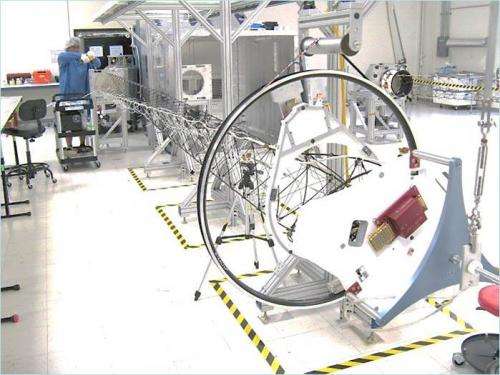GOES-R satellite Magnetometer ready for spacecraft integration

The Magnetometer instrument that will fly on NOAA's GOES-R satellite when it is launched in early 2016 has completed the development and testing phase and is ready to be integrated with the spacecraft.
The Magnetometer will monitor magnetic field variations around the Earth and enable forecasters at NOAA's Space Weather Prediction Center to better predict the consequences of geomagnetic storms. These storms pose a threat to orbiting spacecraft and human spaceflight. In addition, the measurements taken by the Magnetometer will aid in providing alerts and warnings to power companies and satellite operators due to the potential damage a change in magnetic flux can have on electric power grids and satellite systems.
"This milestone is another example of our continuing progress to develop, build and launch GOES-R," said Greg Mandt, NOAA system program director for the GOES-R Series Program at NASA's Goddard Space Flight Center in Greenbelt, Maryland.
The Magnetometer instrument hosts a boom that, once in space, will extend 26 feet away from the satellite. This allows the sensor to be much more perceptive of the space magnetic environment, resulting in even better forecasting of space weather. The magnetometer sensors and electronics elements were built by Macintyre Electronic Design Associates, Inc. (MEDA) in Sterling, Virginia and the boom element of the instrument was built by ATK in Goleta, California. The electronics units were installed on the spacecraft panels and the sensors and the boom will be integrated onto the satellite in the fall. The Magnetometer is the fifth of six total instruments to be completed for the GOES-R satellite.
The advanced spacecraft and instrument technology on the GOES-R, or Geostationary Operational Environmental Satellite – R, series will result in more timely and accurate weather forecasts. It will improve support for the detection and observations of meteorological phenomena and directly affect public safety, protection of property and, ultimately, economic health and development.
The GOES-R series will be more advanced than the current GOES fleet. The satellites are expected to more than double the clarity of today's GOES imagery and provide more atmospheric observations than current capabilities with more frequent images.
Provided by NASA's Goddard Space Flight Center




















